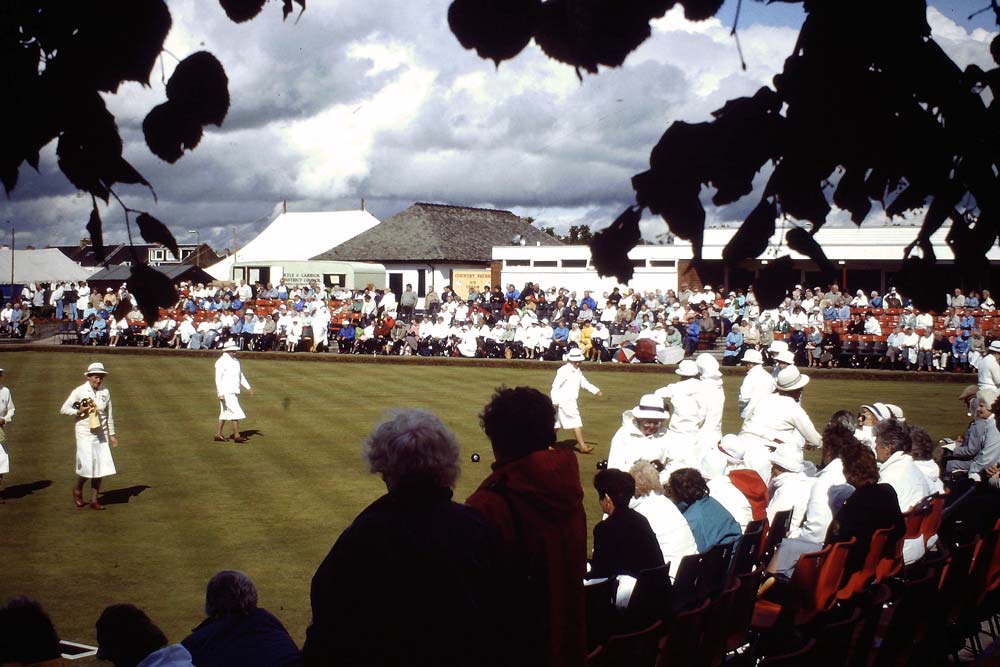
Fighting Bowling Green Dry Patch & Compaction: The Seaweed Cure
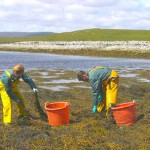
I received a question recently that I thought was worth sharing on the site. It was regarding the use of seaweed fertiliser and whether it can combat both bowling green dry patch and compaction.
Bowling green maintenance is obviously a subject I’m quite passionate about, and deeply experienced in. I think there are a lot of people out there that could benefit from the answer, so I hope it’s helpful to you.
As always, if you have any questions, or want to have a chat about your own bowling green maintenance, get in contact with me. Let’s have a look at the question:
Would you recommend the use of liquid seaweed fertilizer throughout all of the bowling green season (Here – last week in April – 1st week in September?) Would you supplement it with other fertilizers?
We have been told we have patches of Pearlwort, but no disease and that the overriding problem is poor nutrition, compaction, and a condition called Dry Patch. Could this deterioration of the green be due to the late frosts we had plus the high temperatures we have experienced this summer? We have not had problems in the past. Our green has always been one of the best in the area and is chosen by the county to host their matches.
Our new green keeper is adamant that liquid seaweed is not a good fertilizer, in spite of the fact that our previous green keeper used it for 15 years. Your comments would be appreciated.
So, plenty of questions in there – let’s see if I can help!
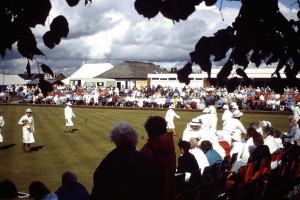
Why Use Seaweed as Feed for Bowling Greens
Seaweed is a fantastic soil conditioner which can be used to great benefit all year round on any sports turf situation.
Seaweed contains well over sixty minerals and nutrients which act to increase the soil flora and fauna content.
This in turn increases the ability of the grass plants to take up and use efficiently the nutrients essential to producing a healthy turf.
It also contains iodene which is a great aid in reducing the incidence of disease.
Seaweed is not a fertilizer on its own, it is classed as a soil conditioner, but in my experience is an essential part of a good maintenance regime. See examples here. It can be used as a fine ground meal, calcified, or most commonly on fine turf as a concentrated liquid.
Dealing with Bowling Green Dry Patch and Compaction
The conditions you describe in your letter, including the dry patch on your bowling green, are indicative of a green that has not been receiving enough aeration, and not enough balanced nutrition. Aeration, spiking and slitting, is essential, as compaction limits the ability of the grass plants to make use of nutrients in the soil efficiently.
Compaction will also lead to the formation of a thatch layer, dead and dying material that will naturally decompose and be incorporated into a healthy soil.
Dry patch is a good indicator of compaction as once the soil dries out it becomes hydrophobic, becoming very difficult to re-wet, especially noticeable in very hot temperatures as in this past year, which kills the grass in these areas due to the lack of a sustainable root system.
A Bowling Green Dry Patch Maintenance Programme
The operations required to restore the green to good condition are as follows.
1 – Intensive aeration, especially on the areas affected by bowling green dry patch. I have always found slitting to be far more effective than hollow coring which softens the surface leading to unevenness, and possible weed invasion.
The ideal program would be to deep slit, 6″ to 8″ depth, alternately with chisel slitting, 4″ depth. every three to four weeks over the Autumn/Winter period. This should be supplemented by hand forking in the dry patch areas to ensure good penetration of the wetting agent. Find wetting agent here.
Over the Spring/Summer period the chisel tines should be used three to four times, with sarrell rolling as well if available.
2 – Ensure a balanced fertilizer is used in conjunction with the seaweed. You can purchase seaweed liquid with nitrogen and potassium already added, something like an 8.0.4 ratio is ideal applied three to four times from Spring to early Autumn. Or you can add your own nitrogen, a lot cheaper, by adding a kilo per knapsack of urea or ammonia. Find the seaweed liquid here. Find nitrogen here.
3 – Wetting agent will be required to help alleviate the dry patch problems by aiding water penetration. This is best applied after each aeration operation.
4 – Scarifying in Autumn and Spring, find a scarifier here, followed by applying about three tons of good quality sandy top-dressing on each occasion.
If the playing season starts early the main top dressing should be applied in Autumn, as growth will not be strong enough in early Spring to incorporate the dressing. Find top dressing here. This is when poor levels can be addressed as well.
5 – Pearlwort is a often symptom of poor nutrition, allowing it to get a foothold in the weak grass sward. It is easily killed by spot treating with a selective weedkiller. Selective weed killer here. All creeping weeds can be dealt with this way, and rosette types like daisy/dandylion, should be removed manually.
In summery, I do not think the late Spring will be a factor in the deterioration of the green, rather a combination of that, and the very hot spell, showing up the problems with the maintenance regime.
I hope you find this of help to you in diagnosing and dealing with bowling green dry patch, and do not hesitate to contact me with any further questions. You can always contact me via our contact page, by phone or email, or leave a comment using the box below.
I can also supply you with a comprehensive maintenance programme to cover your needs if required. Just get in touch!

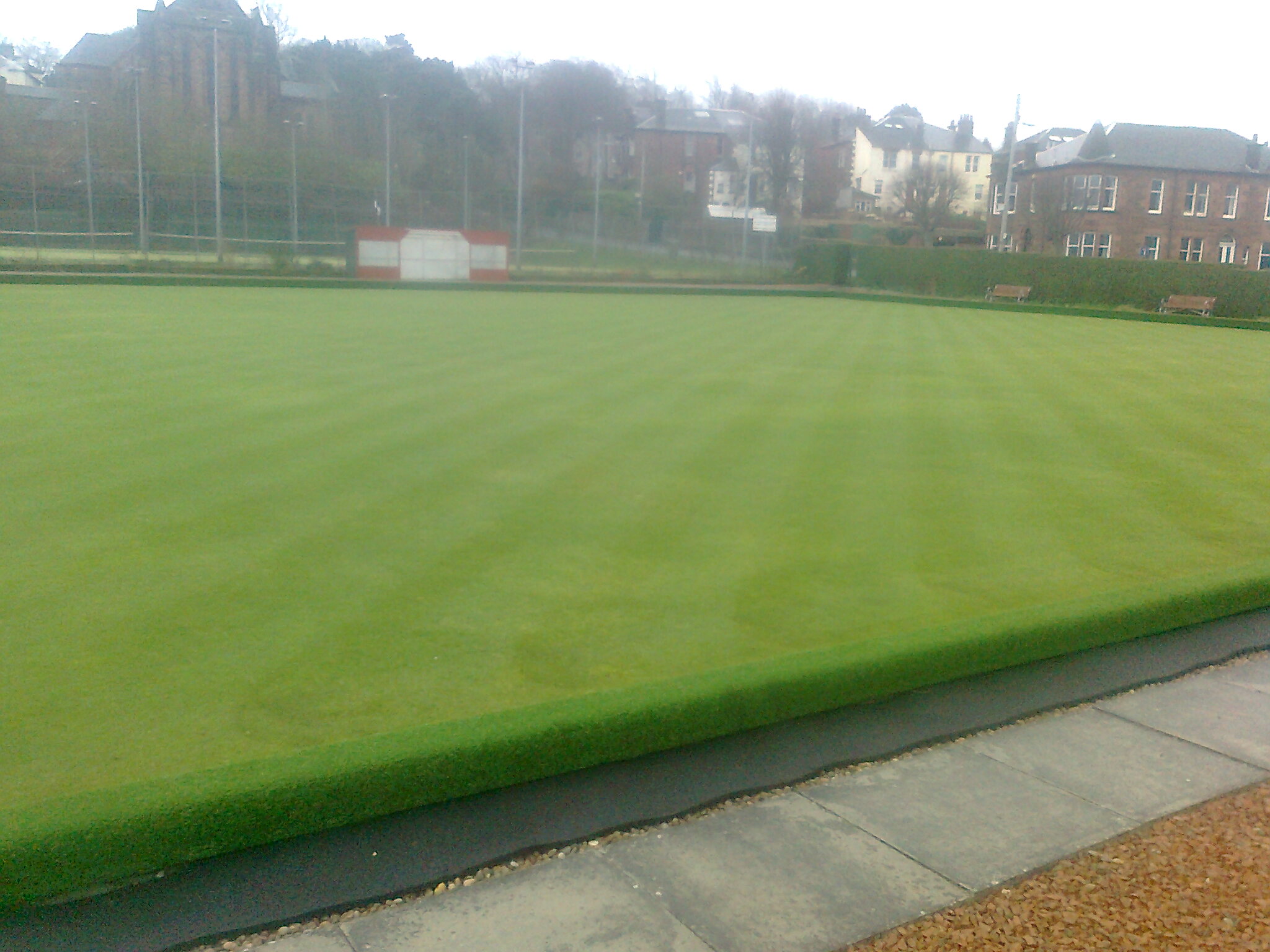
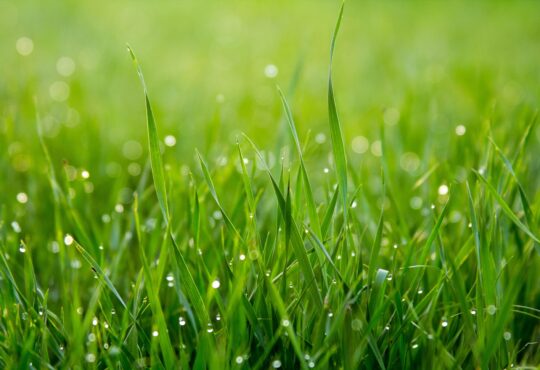
Terrible season 2013 with bare patches and compaction.SEPT2013 Scarified green then hollow tined, added winter fertliser then overseeded. Top dressed with 5 tons of 70-30. OCTOBER 2013 then decided to add wetting agent granules,firm recommended autumn application. FROM APRIL 2013 green spiked 3 times and slit once. Grass is growing over most areas and compaction is getting better. I’m not in possession of pedestrian sprayer. Interested to know if sea weed extract would help further.
April 2013 to Sept 2013 terrible season with bare patches and compaction over most of bowling green, never looked so bad in history. Sept 2013 scarified green then hollow tined, added winter fertiliser then overseeded. Top dressed with 5 tons of 70-30. Then decided to add wetting agent granules on suppliers advice (autumn application} During last season I spiked the green three times and also slit once. Grass is beginning to grow over most areas and compaction is getting better. Interested to know if sea weed extract would help further. Not in possession of pedestrian sprayer.
had a bit of dry patch managed to cure by spiking and using wetting agent ,our problem is i do not have a machine to spike the green so have to employ a contracter which can be expensive will try and get it spiked once every month during season have been advised by our fertilizer rep that as we use liquid sprays from april till mid september to go for the highist nitrogen fertilizer working on the basis that this will be diluted to some degree , my only concern using i high nitrogen content will encourge a lush growth making it more prown to fusirum despite this still played exceponaly well this year
any thoughts please
Hi Howard,
You are right in trying to spike as often as possible, followed by wetting agent on each occasion. Do not listen to the high nitrogen theory. Liquids are taken in very quickly, especially when using wetting agent in conjunction.
Seaweed based liquids get the best out of all nutrients, and help to prevent disease year through. My normal Summer applications are monthly in May, June, July, and August with 3-0-10 +1%mg which stands the grass up giving a lovely smooth fast surface.
I would be happy to give you a full program of fertilizer etc which would also save you a lot of money, as we are introducing a new bowling green shop section. e-mail me on [email protected] and I can give you more detail.
Cheers,Duncan.
Hi Duncan, two of us are running a bowls green in the south east of England, we have been looking at using liquid seaweed on our green, does this work OK in conjunction with other fertilisers,
Would be grateful for your advice on a program for the year round treatment of a bowls green.
Regards Brian Fellowes
Hi Brian, Thank you for getting in touch.
Seaweed liquid is one of the best materials that can be used in turf maintenance. Seaweed has well over sixty nutrients and minerals, so ensures the soil has an adequate supply of everything needed to grow good quality fine turf.
The program for the year should include an early application(mid March, weather permitting) of a high nitrogen/high iron granular fertiliser, then a Summer program of liquid feeds including seaweed meal, some nitrogen, some potassium, and wetting agent.
I have been advising the Essex county club for a few years now, so am familiar with your area.
I would be happy to give you a full run down on operations, and material requirements, along with supply costings, if you would like me to do so.
If so let me know your location, and a run down of your machinery inventory, and I will prepare a program for you.
Regards, Duncan.
Hi Howard,
I omitted to say that you are perfectly correct in assuming that high nitrogen will produce soft growth more prone to wear and disease damage.The fertilizer rep is not providing good advise, but then it is their job to sell!
Duncan.
hi duncan
thanks for your reply
my present summer program began in april 2015
recomendations by rep as follows our green is 1600 mt square
nb i used marathon outfield fertilizer during the autum and winter working on the principle that the grass is kept between 10mm and 12mm there fore larger granules would take longer to break down
now spring and summer
march /april evolution 8-0-5
may till september every two weeks
primo max + 35-o-o fertilizer
seavalution + aquazorb 45
also haveing green spiked once a month ,the green is playing well but think i have two dry patches developing have started to fork the patches and run a small hose on them for about 15 minutes , because the grass is slow to grow everything is about 3 to 4 weeks behind noticed tips of the grass in places had a white tip to them called in the rep , the explanation which sounds fesible was that the primo max had done its job by limiting the top growth but because everything was behind the grass had not developed enough strength to take advantge of the primo max, i have since consulted the rep and have been advised by him to replace the primo max with a spring and summer fertilizer in conjunction with the 35 0 0 and when growth stars to pick up go back to the primo max
our green is an all fescue grass
sorry so long winded but woul appeciate your thoughts
howard
Hi Howard,
I am shocked at the fertilizer levels being applied as they would be way above I have ever experienced in my forty years of green keeping.
Fescue grasses do not need high levels of nitrogen to produce a healthy sward, and I am surprised any rep worth his salt would recommend this program, other than to boost commission levels!
Your Spring fertilizer application would be fine, but I would not in any way recommend the applications rates being used over the Summer months. The seaweed liquid along with wetting agent and a little nitrogen and potassium applied once per month would be a more sensible approach, and lead to a healthier and better quality playing surface. It would also save a lot of money!!
I have not mentioned primo max because in my experience it is not necessary, especially on fescue, to produce a high quality playing surface. The white tips on the grass are evidence of damage caused by over application, and I have witnessed recently severe depletion of fescue in the sward because of this.
Regular spiking is always desirable, and forking the dry patches along with water and some seaweed will certainly help.
On your Winter program I would say the cutting height is a little high, as you need to keep the surface as dry as possible to avoid disease and moss problems. Long grass holds a lot of moisture that the wind would dry of if kept shorter, around 8 mil is high enough.
Very little fertilizer is required by the grass plant in Winter, so an Autumn/Winter application in late September applied after the Autumn renovation is sufficient, with a couple of applications of lawn sand and regular spiking over the Winter.
If you would like to discuss in more detail then please contact me directly by e-mail or phone.
Duncan.
i like this post, we visit again for more updates , thanks for sharing this article.
Hi Duncan
We have over last 2 years a lot of moss in our bowling green it’s seems to have started since we’ve been using a wetting agent,
Is it possible that the wetting agent is helping the moss, the green drains very well and never floods, we never use to use a wetting agent
And never had problems with moss before
I surrender it is a liquid it is a moss killer i have great success it only takes about 2 to 3 days it dead.
Wetting agent will not encourage moss. You need plenty of aeration, and well controlled fertiliser applications, to ensure moss does not get to high levels.
Cheers, Duncan